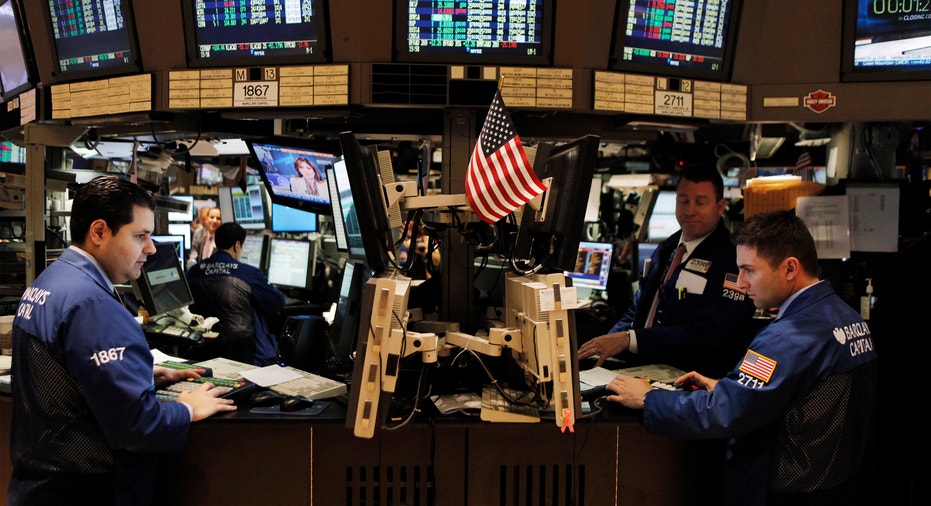Jobs Report Should Prompt Investor Restraint

Much as the Federal Reserve has vowed not to alter its easy-money stimulus policies until the economic data -- particularly in labor markets -- warrants it, investors should display the same restraint.
That would mean taking little or no action Friday when the Labor Department releases its June jobs report. Assuming, of course, the data reveal no major surprises.
Economists are forecasting “more of the same” from the report. In other words, neither a step forward nor a step backward in terms of job growth, mirroring earlier labor reports in the first half of 2013.
Specifically, forecasters are predicting an increase of about 165,000 jobs in June, down slightly from 175,000 in May, and the headline unemployment rate is expected to fall a notch to 7.5% from 7.6% a month earlier.
Since the labor market isn’t expected to have improved or declined significantly in June, it stands to reason that the Fed (as Fed policy makers have repeatedly explained) will not be announcing any new policy shifts later this month. Bond purchases will continue at a rate of $85 billion each month, and the fed funds rate, set by the Fed, will remain at nearly zero for the foreseeable future.
Instead, the Fed will use the latest numbers -- and those that follow in the coming months -- to assess how monetary policy might be impacted down the road. There will be no knee-jerk reactions from the Fed. Investors should follow their lead.
For the record, let’s review Fed Chairman Ben Bernanke’s prepared statement which preceded his June 19 press conference. Let’s also recall that the statement and Bernanke’s press conference comments sparked a dramatic sell-off in stocks and pushed bond yields to their highest levels in years. Markets remained volatile for another week as investors interpreted and re-interpreted the chairman’s remarks.
Yet it’s hard to imagine how Bernanke could have been any clearer.
Bernanke first reiterated the Fed’s position to maintain bond purchases at their current levels, explaining that could change “as economic conditions evolve.” Aware that markets were anxiously awaiting more details, he then went on to elaborate how conditions could evolve such that the Fed might be compelled scale back bond purchases.
Bernanke said the Fed expects “continuing gains in labor markets, supported by moderate growth that picks up over the next several quarters” as the impact of recent tax increases and federal budget cuts dims. Meanwhile, inflation should tick higher toward the Fed’s target rate of 2%, easing fears of deflation.
If the economy moves along that rosy path envisioned by the Fed the central bank could begin scaling back bond purchases later this year, gradually phasing out the program by mid-2014, Bernanke explained. Under those economic conditions and according to that timeline, the Fed predicts the unemployment rate will likely have fallen to about 7% by the time bond purchases end.
Fed "Chronically Optimistic"
Not everyone agrees with that scenario, a point that should not have been lost on investors as they overreacted to Bernanke’s comments.
“We think the Fed is too optimistic, and that unemployment won’t fall below 7.5% this year. So we question whether the Fed will end up tapering before 2014,” Paul Edelstein, an analyst with IHS Global Insight said shortly after Bernanke’s press conference.
Edelstein went on to describe the Fed “chronically optimistic,” adding that markets consequently “shouldn’t worry about the Fed tapering this year.”
But worry they did, although it’s difficult to determine why. Bernanke repeatedly stressed the Fed’s position that any future shift in policy will well-telegraphed and data driven.
It’s worth quoting Bernanke directly to recall precisely how clear he stated the Fed’s position:
“I would like to emphasize once more the point that our policy is in no way predetermined and will depend on the incoming data and the evolution of the outlook as well as on the cumulative progress toward our objectives. If conditions improve faster than expected, the pace of asset purchases could be reduced somewhat more quickly. If the outlook becomes less favorable, on the other hand, or if financial conditions are judged to be inconsistent with further progress in the labor markets, reductions in the pace of purchases could be delayed. Indeed, should it be needed, the Committee would be prepared to employ all of its tools, including an increase in the pace of purchases for a time, to promote a return to maximum employment in a context of price stability.”
It remains a mystery how markets interpreted those comments to mean the Fed was planning to pull the plug any day on stimulus.
Investors should take their cue from the Fed and base their decisions on hard data rather than misguided speculation over what the Fed might or might not do. With that in mind, given projections for a very bland labor report Friday, investors might want to continue their July 4th holidays for another day.



















